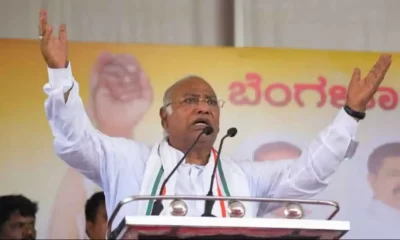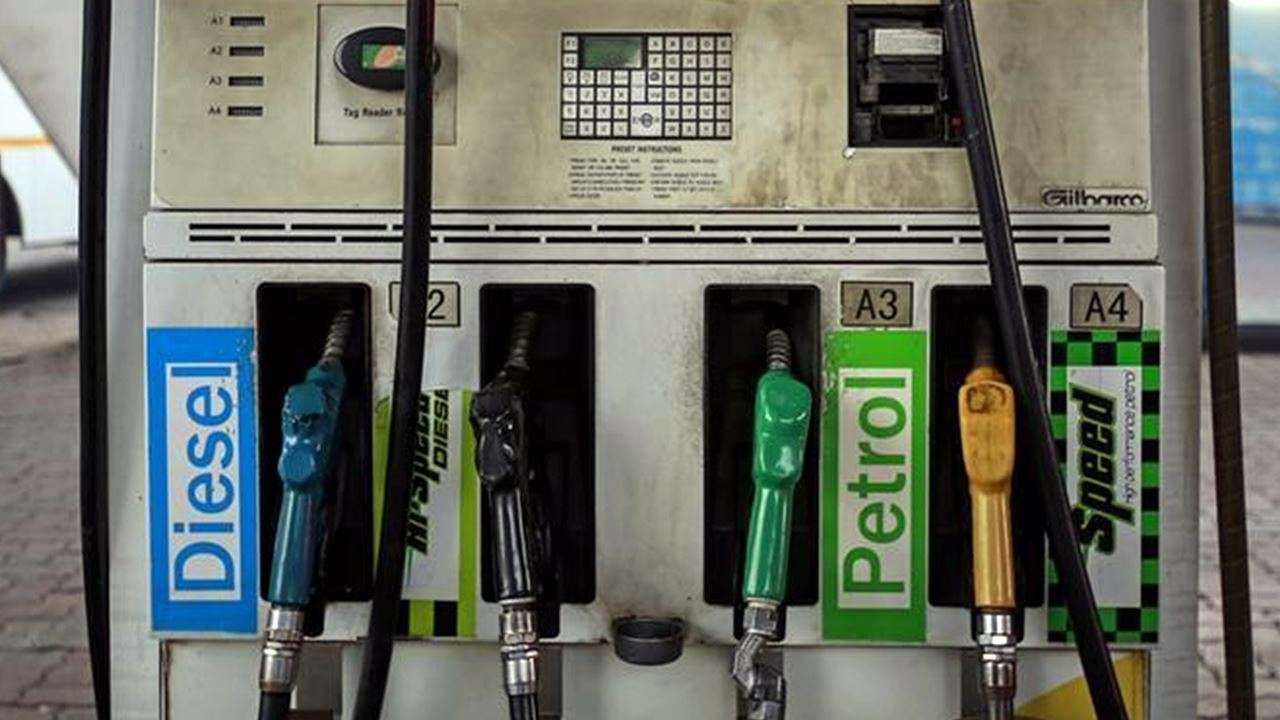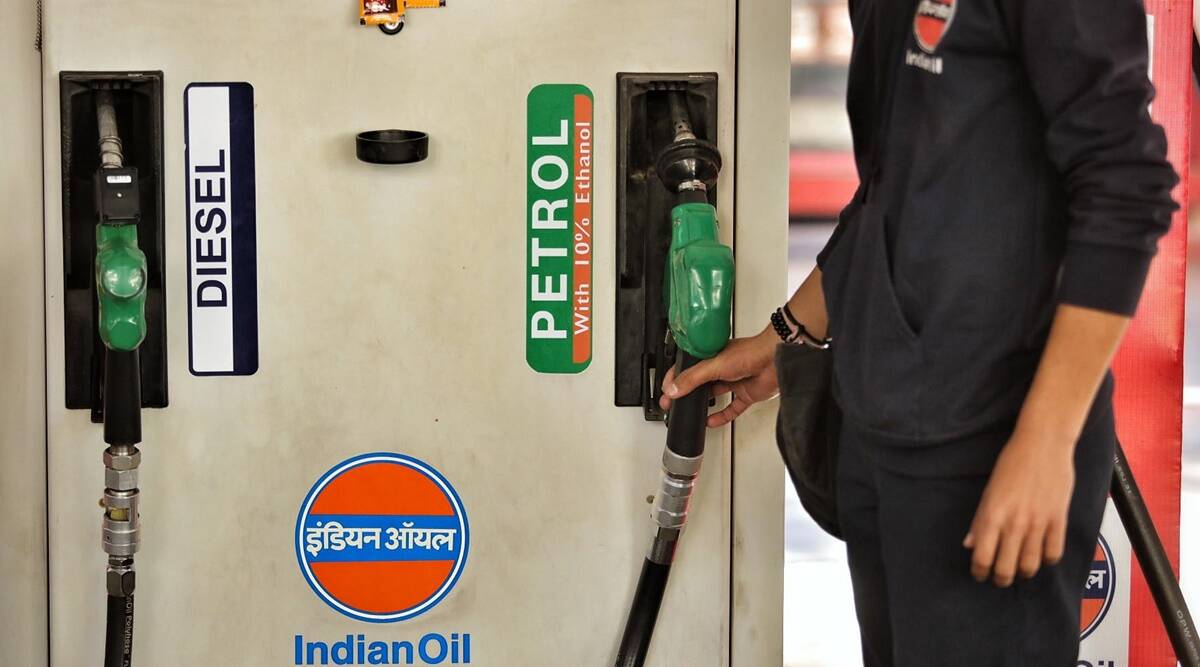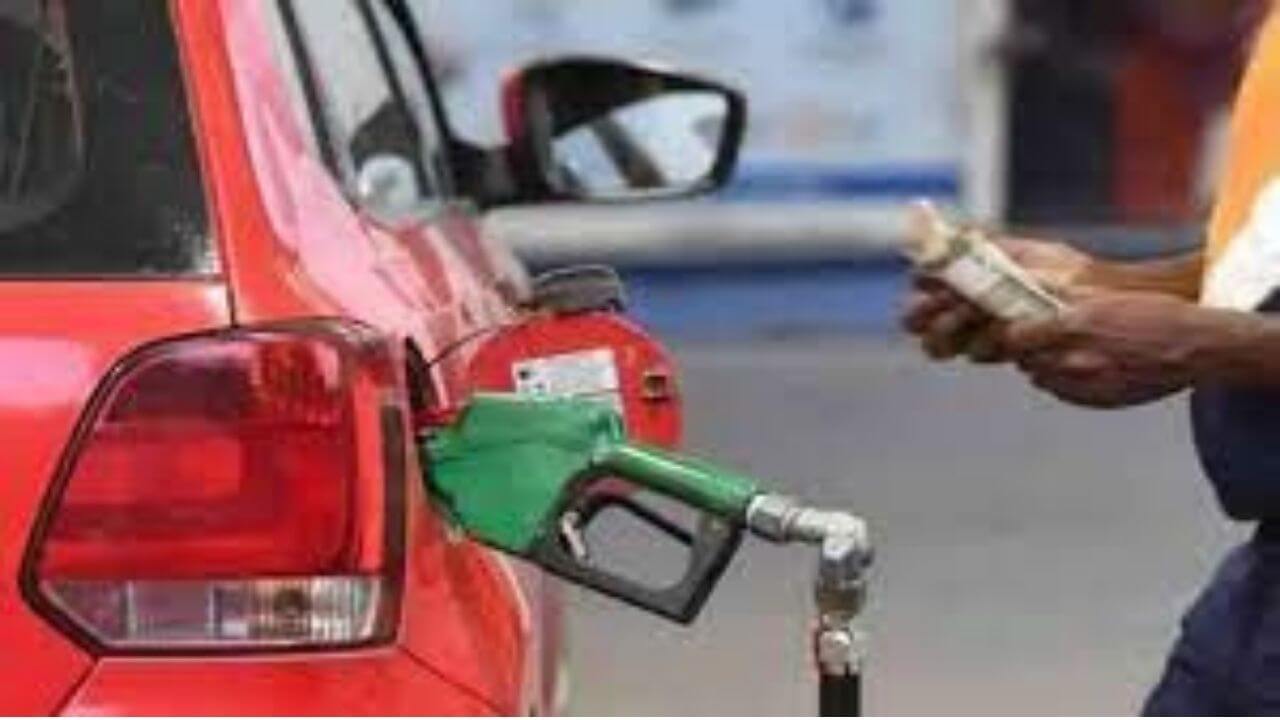Gadgets
Will Bharat 6 allow Delhites to breathe cleaner air?

~By Rashme Sehgal
Delhi is quietly switching over to Bharat Stage 6 which is exactly the same as theEuro 6 auto fuel being sold in European countries. One year later, Bharat 6 is expected to be sold across the NCR and by 2020, Bharat 6 will be sold pan India. The official date for this launch is April 1, 2018.
A derivative of Euro 6 standards, BS 6 standards will ensure a 68 per cent reduction in nitrogen oxide emissions which are a family of poisonous gases emitted from automobiles. It will also see sulphur emissions come down by 80 per cent.
India has leap frogged from Bharat 4 to Bharat 6. The original plan was to introduce Bharat 6 by 2022. This preponement by two years for the capital is being done in order to curb vehicular pollution and to shut critics who till a year ago, had gone to town describing Delhi as being the most polluted city in the world.
For Delhi to receive preferential treatment in receiving low-lead fuel is not unexpected. It has always received priority in the introduction of cleaner fuels in the past. It is also the city with the largest concentration of vehicles in the country with as many as 5000 new vehicles hitting the NCR every day.
In order to facilitate this change over, Indian Oil Corporation has been supplying fuel from its refineries at Mathura and Panipat to automobile companies to be used for testing purposes.
Dr AnumitaRoychowdhury, executive director and the Centre of Science and Environment believes, ` This is a very significant transition because it will immediately improve the fuel quality available in the country. Bharat 6 has a low sulphur 10 ppm content as opposed to the present 50 ppm content levels in the fuel.’
Chowdhury believes the full impact of this step will be gauged in the coming months. “It’s tough to say how much difference it would make but overall there will be a reduction in emissions and that is a very positive step.”
To kick in this point further, Ministry of Road Transport issued a notice on February 21 2018 that BS 4 emission compliant vehicles manufactured before April 2020 will not be registered in the capital after June 30,2020. Mini buses, cargo vehicles and normal buses which are sold in the form of drive away chassis manufactured before April 2020 will not be registered after September 2020.
The Ministry of Road Transport has decided to give a prior notification of two years because the Supreme Court’s sudden ban on the registration of BS 3 vehicles from April 1 2017 had resulted in a great deal of confusion.
According to the Centre for Science and Environment, the introduction of BS 6 will improve emissions from the existing fleet including the older vehicles on the road. But of course, BS 6 compliant vehicles which begin to roll out by 2020 will do so with more advanced emission control systems.
The question being asked is just how much will change over immediately help reduce emission levels in the capital? A 2016 report by the IIT Kanpur commissioned by the Kejriwal government in Delhi to understand the main causes of air pollution had concluded that trucks and two-wheelers accounted for the major chunk of PM 2.5 pollution with passenger cars accounting for less than ten per cent of the particulate matter being released in the air. Vehicle emission account for an average of 25 per cent of PM 2.5 levels going up to 36 per cent in winter.
The study held road dust responsible for a major source of pollution responsible for 35 per cent of PM.2 levels apart from domestic cooking, power plants and industries.
Vishnu Mathur, director general of the Society of Indian Automobile Manufacturers (SIAM) believes the introduction of B S 6 will see pollution levels come down however marginally.
“This is not something which has been quantified so far, so it is difficult to tell. We cannot say whether it will come down one per cent or two per cent more.”
Mathur pointed out, “Using higher grade fuel on BS 4 cars will marginally improve their emissions. By 2020, it will be mandatory to have BS 6 cars and by that time the vehicle technology is going to change.”
What kind of change of vehicle technology will BS 6 require in order for cars to adapt to these emission-reduction technologies.
Automobile expert Murad Ali Baig pointed out, ` Diesel cars will need new exhaust, diesel- particulate filters and will require changes in the selective catalytic reduction module. Car companies can handle it. This is not a big issue. The older cars can be retrofitted wherever required.’
Other experts believe this will lead to cost addition in diesel cars and will see a disproportionate difference between diesel and petrol cars.
Suraj Ghosh, the principal analyst with South Asia Powertrain Forecasts at IHS Automotive believes that the amount of increase will depend on the size of the engine but a diesel car with an engine size of 1.5 litre could see a price increase by over Rs 50,000. The price of a 2 litre engine could see a price increase of overRs 1.5 lakh.
Ghosh believes the smaller diesel cars will become unviable and their production can get discontinued due to this cost escalation.
Mathur however refused to step into this controversy. ` Of course vehicle technology will change and costs will become higher. But costing and pricing do not go hand in hand. We cannot forget there is a great deal of competition in the market,’ he said.
Automakers are working overtime to launch BS 6 vehicles by April 2020. Baig said, ` Upper end vehicles such as Mercedes Benz and Audi are selling BS 6 compliant vehicles. But out auto players who are exporting to Europe such as Maruti are selling Euro 6 compliant vehicles. Maruti owns a major portion of the market in the NCR region and with the government announcing the plans in advance, most manufacturers are working towards meeting deadlines.’
A BS 6 engine can only operate on BS 6 fuel and to allow BS 6 engines to ply on BS 4 fuel is to damage the engine. On the other hand, to allow BS 4 engines to operate on BS 6 fuel is to see marginal levels of ( pollution) decline Baig added.
Industry sources admit that while they are ready with the technology, certification and regulatory approvals will also take time especially since the entire industry is gearing up towards meeting the 2020 deadline.
Oil retailers are also working over time to meet this deadline. Indian Oil has 198 out of the 398 petrol pumps in the NCR. Bharat Petroleum Corporation Ltd has 150 petrol pumps while Hindustan Petroleum Corporation Ltd has around 50 pumps. Ajay Bansal, President of the All India Petroleum Dealers Association believes all three companies will be able to provide a steady supply of BS 6 fuel given that Delhi is serving as the entry point. Both BPCL and HPCL can buy fuel from Indian Oil to meet requirements Bansal believed.
Kali Krishnan, general manager, corporate communications, Indian Oil said, ` A large number of facilities have had to set up in all our refineries. We also have to ensure the flushing out of BS 4 fuel from our supply lines. This change over has cost the company Rs 15,400 crore.’
Will BS 6 see a surge in fuel pricing? Mathur does not anticipate an immediate increase especially since that would be restricted to Delhi.
“I do not see any increase in pricing which in any case is fluctuating according to international oil prices. At present, Delhi is selling BS 4 fuel, the rest of the country is selling BS 3 fuel but there is no price difference (differences are due to state taxes).”
While Sunita Narain, director general, CSE believes the government has finally shown ‘proactive and responsive leadership’ rather than following small and incremental steps. She has always maintained the problem of air pollution requires concerted action. But there are others who believe it would have been better for India to have followed the European route of first introducing the fuel and then allowing car technologies to evolve.
“This is more like a knee jerk reaction,” said an industry analyst.
Delhites are waiting with gasping breaths to see just how much this change will bring. Prof Jeffrey Sach, director of the Earth Institute at C0lumbia University and special adviser to UN Secretary General Antonio Guterres on the Sustainable Development Goals during a recent visit to Delhi described it as being an ‘unliveable city’.
When asked to explain why, Sachs told this reporter, “Delhi has amongst the worst air pollution levels in the world and acute episodes such as ‘Great Smog’ of November 2017 are shocking and dangerous. Experts tell us with greater and greater evidence each year that air pollution in Delhi and other Indian cities causes massive disease burdens such as cardiovascular disease, lung cancer, chronic pulmonary disease and long term reductions of children’s cognitive functioning and massive premature death.”
Delhites are hoping Bharat 6 will make a difference.
Gadgets
WhatsApp to introduce Native File Sharing feature similar to Apple’s AirDrop
Users can choose to be visible to others without disclosing their phone numbers to people who are not their contacts.

A Meta-owned messaging platform, WhatsApp is all set to introduce a new feature that allows Android users to share files with another user nearby. According to reports, the feature will be developed similar to Apple’s AirDrop.
The file sharing feature nearby is not currently available for beta testers. However, according to a report from WhatsApp feature tracker WABetaInfo, it seems that the feature will soon be introduced. The report reveals a screenshot that shows an option within the app stating, to share files with people nearby, along with a list of nearby users.
It is interesting to note that users can choose to be visible to others without disclosing their phone numbers to people who are not their contacts. In order to share files with other users, one needs to wait for nearby users to accept their request. The process involves a unique interaction, where nearby users can shake their device to receive incoming share requests. It is important to note that this feature is designed with end-to-end encryption to ensure user privacy.
In the upcoming update, WhatsApp is expected to introduce a nearby file-sharing feature. However, the current beta version for Android, which is 2.24.2.20, has addressed a camera issue. Some Android beta testers have reported difficulties in launching the camera within the app after the 2.24.2.13 update. Upon launching, users were presented with an error message that said, can’t start camera, please restart your device. This issue persisted even after restarting the device or relaunching the app.
The latest beta update of WhatsApp, located at 2.24.2.20, has fixed the camera bug. This allows users to launch the camera within the app and share photos and videos with their contacts without any interruptions. As WhatsApp continues its efforts to improve its features and address bugs, users can expect a better messaging experience on the platform.
Gadgets
Meesho mega blockbuster sale: E-commerce platform to offer 80 percent discount on electronics
The e-commerce platform’s first mega blockbuster sale will sell more than 400 brands directly with the help of authorised partners on its digital store called Meesho Mall.

Ahead of the festive season, e-commerce platform Meesho’s mega blockbuster sale is starting on Friday, October 6, 2023. The platform will provide a massive discount of up to 80 percent on different categories such as essentials, accessories, electronics, footwear, etc.
The blockbuster sale is scheduled to conclude on October 13, 2023. Notably, the Softbank backed e-commerce platform is starting its festive sale a day before Flipkart or Amazon’s festive sale goes live. The e-commerce platform’s first mega blockbuster sale will sell more than 400 brands directly with the help of authorised partners on its digital store called Meesho Mall.
Reportedly, the platform also added over 50 lakh new customers during these sales. More than 75 percent of the demand was received from Tier-II cities, including Amravati, Aurangabad, Dehradun, Nellore, Solapur, and Warangal. The platform further claimed that they have added more than 2 lakh sellers in the past two years.
Recently, Meesho affirmed that they have received over 10 million (approx) from its pre-festive sales during Onam, Raksha Bandhan, and Ganesh Chaturthi. The platform has more than 14 lakh sellers, selling approx 12 crore products in 30 different categories.
In an effort to increase the seller base, the company announced the onboarding of non-GST sellers on the platform earlier this week. The GST council announced to permit the e-commerce platform to onboard sellers with turnover of up to Rs 40 lakh.
Prior to Meesho’s Mega Blockbuster Sale, the company introduced a loyalty programme during which eligible users will earn Smart Coins, which the user can redeem every time they make the purchase of any products on the platform.
As per Redseer, over 140 million shoppers are likely to make purchases during the festive season. This will enhance the Gross Merchandise Value (GMV) of the Indian e-commerce sector by 18 to 20 per cent and may touch Rs 90,000 crore as compared to Rs 76,000 crore last year.
Phones & gadgets
Apple launches iPhone 15 series, India price, features, availability
The iPhone 15 series will be available in India from September 22 but iPhone lovers can also pre-order, starting from September 15 onwards.

Apple launched its most anticipated iPhone 15 series, including the iPhone 15, iPhone 15 Plus, iPhone 15 Pro and iPhone 15 Pro Max during the Wonderlust event globally on September 12 night.
The iPhone 15 series will be available in India from September 22 but iPhone lovers can also pre-order, starting from September 15 onwards.
People can buy a new iPhone 15 or upgrade it to the old one. There are five colours available for the people.
According to reports, Apple has been manufacturing the iPhone 15 series in India and China. Apple has moved 7% of its iPhone production to India. Previously, India was not making the newest models. The Centre’s production-linked incentive (PLI) scheme for smartphones played a part in Apple moving its production to India.
The new iPhone 15 has been launched with the same starting price as its prototype, the iPhone 14. The 128GB variant is priced at Rs 79,900, while the 256GB variant costs Rs 89,900. For people who need more storage, the 512GB variant is available for Rs 1,09,900.
This latest iPhone series puffs a 6.1-inch display and comes in five different colours which are pink, yellow, green, blue, and black. While the design remains the same as the previous models, the iPhone 15 features a dynamic island notch instead of the usual notch, which was highly popular among the iPhone 14 Pro phones.
The camera part of the iPhone series has undergone significant upgrades, the new iPhone 15, with an enhanced 48-megapixel primary sensor replaces the 12-megapixel dual camera system which was available in the previous iPhone 14. This significant improvement promises better low-light photography and portrait shots.
The tech giant announced that the iPhone 15 has an all-day battery life, making it more convenient for users to go about their daily activities without worrying about their phone’s battery.
The iPhone 15 Pro models feature a lighter body and thinner bezels. The new AirPods Pro with USB-C charging case will support Lossless Audio with Apple Vision Pro.
Additionally, the iPhone 15 is powered by Apple’s A16 bionic processor, an upgrade from the A15 bionic chipset used in the previous iPhone 14 and iPhone 14 Plus models. The Pro models had the faster and better A16 chip, but now this feature is available in all iPhone 15 models.
The USB-C port on the standard iPhone 15 and iPhone 15 Plus remain limited to lightning speeds up to 480 Mbps. The iPhone 15 Pro and iPhone 15 Pro Max support USB 3 speeds up to 10 Gbps. People will need to buy a separate 1-meter Thunderbolt 4 Pro cable for Rs 5,724 or Rs 10,701 for the 1.8-meter cable to support faster speeds.
The dynamic island notch feature, which can adjust its size according to notifications, was widely discussed before the launch of the iPhone 15. This unique feature can now be available in all models of the phone.
Another important feature of the iPhone 15 is the shift to the USB Type C charging port. Apple has abandoned the lightning port in favour of the more commonly used USB Type C charging port. This means, there is no longer a need for a special iPhone charging cable to be carried around everywhere you go.
-

 2024 Lok Sabha Elections18 hours ago
2024 Lok Sabha Elections18 hours agoMallikarjun Kharge vows to continue politics till his last breath to defeat BJP
-

 2024 Lok Sabha Elections19 hours ago
2024 Lok Sabha Elections19 hours agoNitin Gadkari says he’s better now after collapsing at election rally in Maharashtra’s Yavatmal
-

 India News24 hours ago
India News24 hours agoRamdev, Balkrishna publish bigger apology in newspapers after Supreme Court’s rap
-

 2024 Lok Sabha Elections21 hours ago
2024 Lok Sabha Elections21 hours agoPM Narendra Modi slams Congress over Sam Pitroda’s inheritance tax remarks, accuses Congress of intending to impose higher taxes
-

 Trending22 hours ago
Trending22 hours agoA waiter’s life: Social media users go emotional on watching viral video
-

 Entertainment20 hours ago
Entertainment20 hours agoMadhuri Dixit, Karisma Kapoor recreate Dil To Pagal Hai dance battle on Dance Deewane
-

 Entertainment24 mins ago
Entertainment24 mins agoBollywood stars Salman Khan, Alia Bhatt, Rekha, Sonakshi Sinha, Aditi Rao Hydari attend Sanjay Leela Bhansali’s Heeramandi premiere
-

 India News2 hours ago
India News2 hours agoTamannaah Bhatia summoned in illegal IPL streaming app case, to appear before cyber cell on April 29















